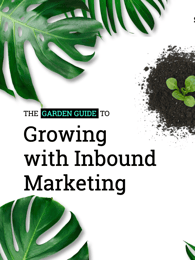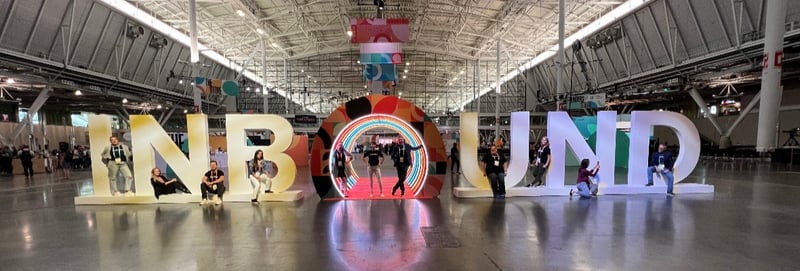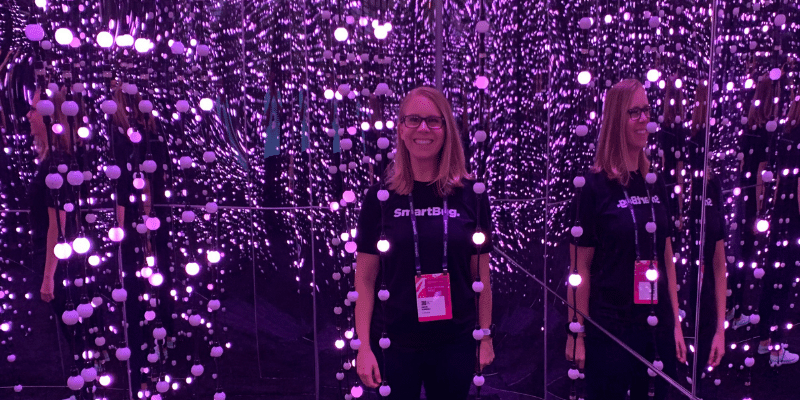
The Future of Marketing: Marketing Trends from INBOUND 2022
September 14, 2022
By Ale Melara
In order to achieve growth and reach our objectives, marketers must stay on top of the trends that involve not just our current and future customers but also our buying groups and talent.
This year, INBOUND gave us a whole section called “What’s Next” that specifically tackles different marketing, sales, and business trends from incredible sources such as the B2B Institute, LinkedIn’s marketing think tank; the Ehrenberg-Bass Institute for Marketing Science; and top marketing companies like Atlassian.
In case you missed any of these resources during INBOUND, we’ve compiled a selection of impressive sessions in this article.
Note: Powerhouse Pass attendees have access to the INBOUND 2022 virtual event platform for one year from today to rewatch any session on demand.
What’s Next: Connecting with Future Buyers: Winning Mindshare to Grow Market Share
Presentation by:
Allyson Hugley
LinkedIn, Global Director, Customer Insights
Watch the on-demand recording of the session (note that you must have an INBOUND 2022 Powerhouse Pass to view).
Drawing upon perspectives from the B2B Institute, LinkedIn’s B2B marketing think tank; the Ehrenberg-Bass Institute for Marketing Science; and LinkedIn’s own unique economic graph, this session combined new concepts, frameworks, and metrics to guide brand marketers toward new ways of engaging current and future customers, buying groups, and talent in order to achieve growth.
Future buyers can be looked at through two different lenses: the now and the next.
- Now: How do you keep your current buyer in the fold and keep them as a recurring buyer?
- Next: How do you appeal to the future buyer?
Widespread sources of disruption are impacting all aspects of life. What we’re seeing:
- Emerging macroeconomic and geopolitical pressures, many competing forces (like climate change, war, and infrastructure needs) that put pressure on our systems
- Schools that are not in session because of the pandemic
- A new generation of workers
- Political polarization
- The blending of B2C and B2B that has been accelerated by COVID-19 and the work-from-home trend
To stand out, you need to show how you can assist decision makers and help them overcome this new normal. Customer science says there’s a need for new concepts, frameworks, and metrics to understand the requirements to achieve growth.
Consider these three keys to connecting with buyers:
- Break through with content expectations.
- Create mental availability with new outcome models.
- Understand future buyers and changing buyer demographics.
1. Break through with content expectations.
For business leaders, managing the future is paramount. Business leaders are also grappling with confidence levels, in the face of so many unknowns. CMOs need to be more anticipatory.
Future buyers are grappling with more content of lower quality. There’s a need to understand the breakthrough points—something that’s going to give them a new model.
Future buyers want provocative content, and telling them what they already know is not the way to go.
2. Create mental availability with new outcome models.
How do you stay top of mind and create memory triggers? Purchasing decisions are increasingly made by a committee rather than just one individual—on average, a buying committee is made of 6.8 people. Trends that accelerate this committee purchasing model include:
- Evolving complexity
- Distributed work reality and new collaboration habits
- Improved technology
The key is to embrace a more customer-centric “in-market”/”out-market” model. Most customers are likely out-market, so reaching buyers who are “not ready” to buy is critical.
Category entry points (CEP) are based on memory triggers. Focus on memories and situations to stay top of mind. This includes understanding the following:
- What motivates your buyer
- How they are feeling
- When you should reach out to them (seasonality)
- Which fear dynamics affect them
3. Understand future buyers and changing buyer demographics.
Demographic changes mean that there’s a new generation with different ways of approaching decision-making.
Gen Z is today’s future buyer. They’re coming into the marketplace with a variety of new ways of thinking, shaped by recent events. Gen Z is also part of the “great reshuffle”—they move a lot! This includes an 80 percent year-over-year increase in overall job transitions. Not only are they changing companies, but they’re also changing geolocation more regularly than previous generations.
Gen Z characteristics to keep in mind:
- Highly career motivated
- Crave stability
- High aptitude for social awareness
- Analytical and well-researched
Here’s a quick reference guide to learning agendas for different generations:
It’s important to connect the dots across multiple generational CEPs for a unified approach. Place your brand DNA at the heart of your content and communication to build consistency and trust.
Key Takeaways:
- Buyers’ bar for content is higher, making it more challenging to break through. Spend the time to truly understand what information will make an impact on them.
- Understanding and utilizing CEPs are required to create the situational awareness critical to capturing future buyers’ mindshare.
- The next generation of buyers will be more mobile, technical, and focused on business and societal factors. Ignoring the fact that different audiences have different preferences and learning agendas is a critical mistake.
What’s Next: Building an Organization to Fuel the Flywheel
Presentation by:
Ashley Faus
Atlassian, Director, Integrated Product Marketing
Robert Chatwani
Atlassian, CMO
Watch the on-demand recording of the session (note that you must have an INBOUND 2022 Powerhouse Pass to view).
How do you build and maintain a flywheel that reaches hundreds of thousands of customers, with over a decade of explosive year-over-year growth? Atlassian marketing leaders answer this question in this session.
How do you think about learning about the flywheel?
- Remove as much friction as possible.
- Apply a lot of force.
Twenty years ago, Atlassian did everything differently: They put the product (software) on a web page and added the price. It changed everything for the company.
Let your potential buyer access your product.
Put the code out and let the customer see it. Why? We had bugs and said, “Here’s the code; fix it,” in order to lessen the requests that were coming in. This gives users a place to become a champion and builds a community.
Be patient, not greedy, when it comes to scaling revenue.
When it comes to ungated items and products, don’t approach it as “How can I make you pay?” Instead, come at it from the angle of, “How can I delight you with free items so you will talk to us, trust us, learn about the company, and discuss the company with others?”
Empower champions.
Give them the information they need to be successful—as mentioned before, “the great ungating.” Make as much of your business as self-service as possible. This extends the team mindset from just the internal team to encompass the customers, too.
Build a solid foundation from within.
Determine your principles—not just to build scalable growth but also to build relationships. Finding talent from disparate backgrounds is important because it brings a difference in thought and perspectives to the table, so it’s essential to source from diverse backgrounds.
Use your own product and go through your own buying process once a month. Be sure to embed the idea of UX professionals and designers on your team.
Consider how to foster and grow talent to retain institutional knowledge so you can continue to serve customers. You can get siloed as you grow, so make an effort to maintain an open company—anything that’s being worked on is open to the entire company. A sustainable way to scale a business is for everyone to have equal access to get their jobs done.
Hire for values and character first, then energy, then competence. The biggest hiring mistakes come from doing it the other way around. For mid-level team members who are looking for something different, give them the latitude to learn around the organization—for instance, an 18-month rotation in a different area of the business. Switch roles. What does change look like when people are trying something new?
What has to happen to change your business as a whole?
- Deliver the present
- Optimizing
- Removing friction
- Identifying better customer journey pieces
- Change for the future
- Making changes to the business
- Launching free products
- Removing the need to add a credit card for a free trial
- Categorize
- Will this change reflect growth now or in the future?
- What do we expect from this change?
- What would you do if you knew success was inevitable?
- Reflect: Did it work, or not?
- The thing you’re most nervous to change is probably the thing that needs your attention most.
In the next INBOUND22 recap blog post, we’ll tackle specific trends for social media marketing. Stay tuned!

About the author
Ale Melara is a Sr. Content Marketing Manager based out of El Salvador, Central America. Ale is our very first LATAM employee. She's worked remotely for the past 5 years and she's had different roles in sales and marketing. In her free time, she works on creating educational videos around digital marketing for her "Inbound Nomad" social accounts where she promotes traveling the world while being a full-time marketer. Read more articles by Ale Melara.




















